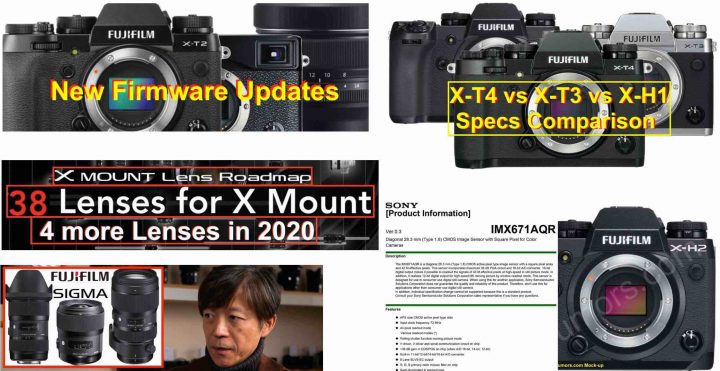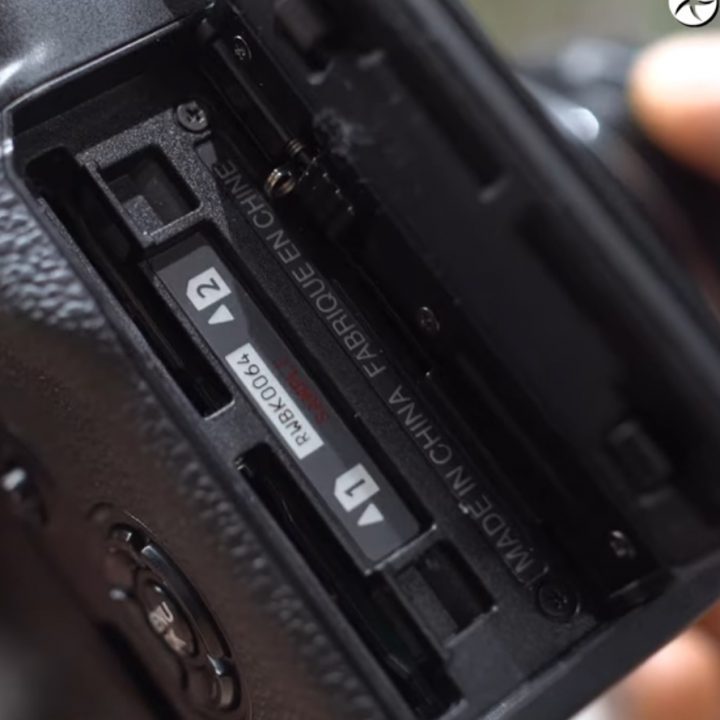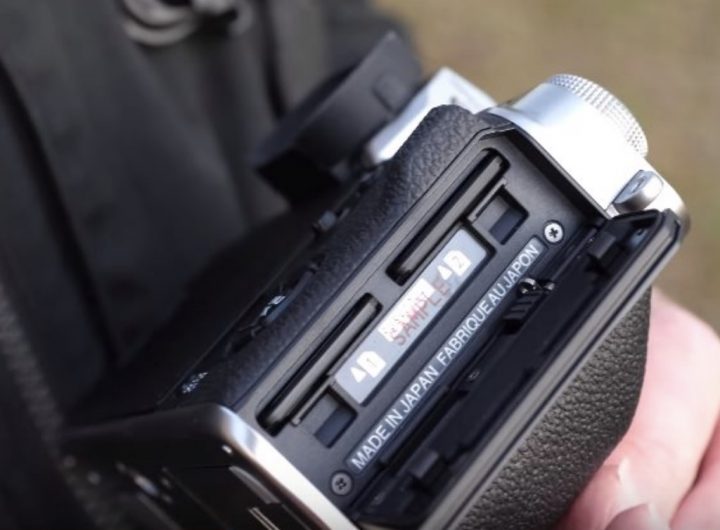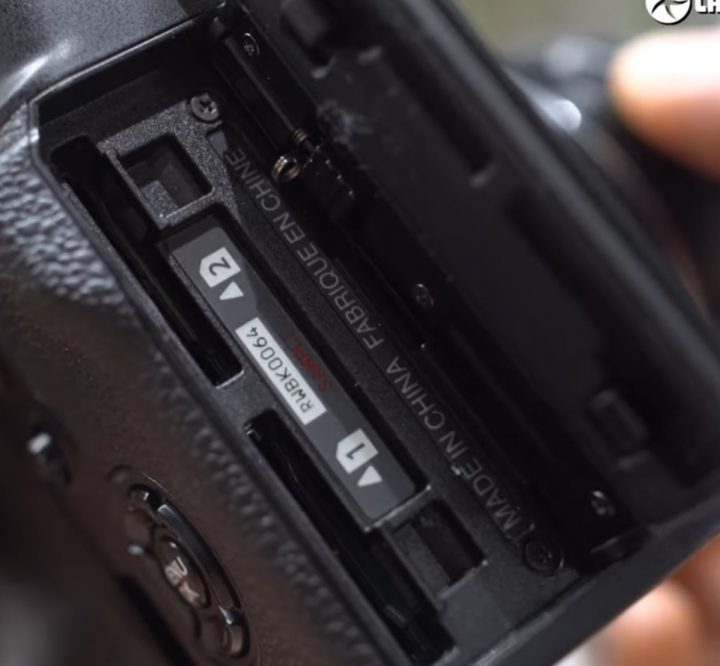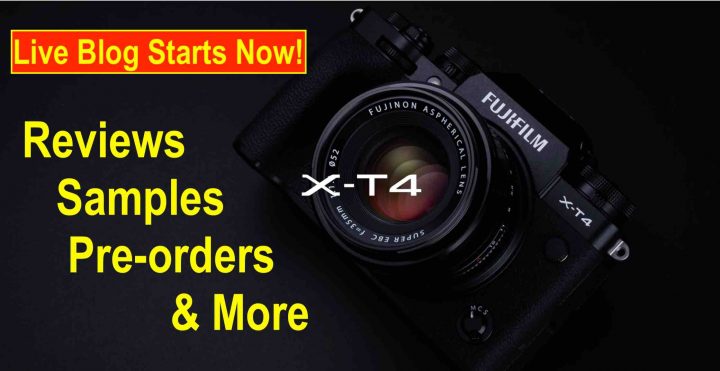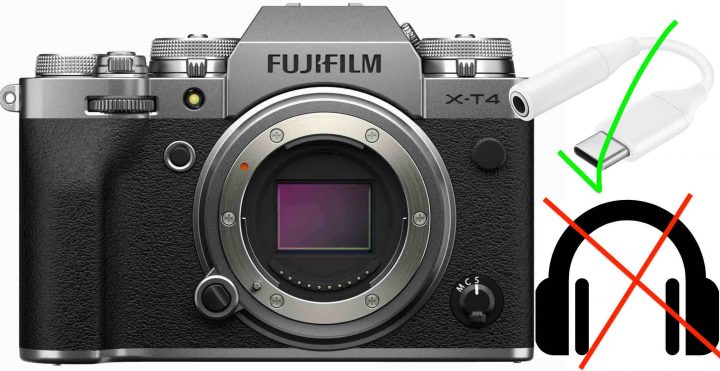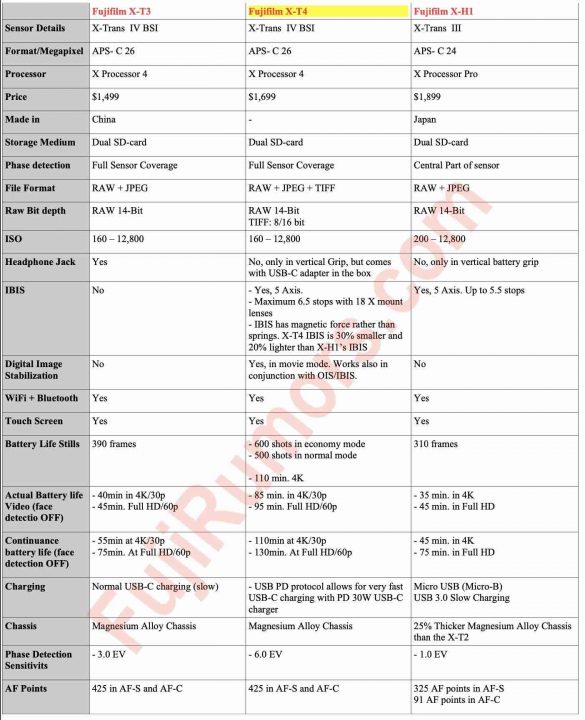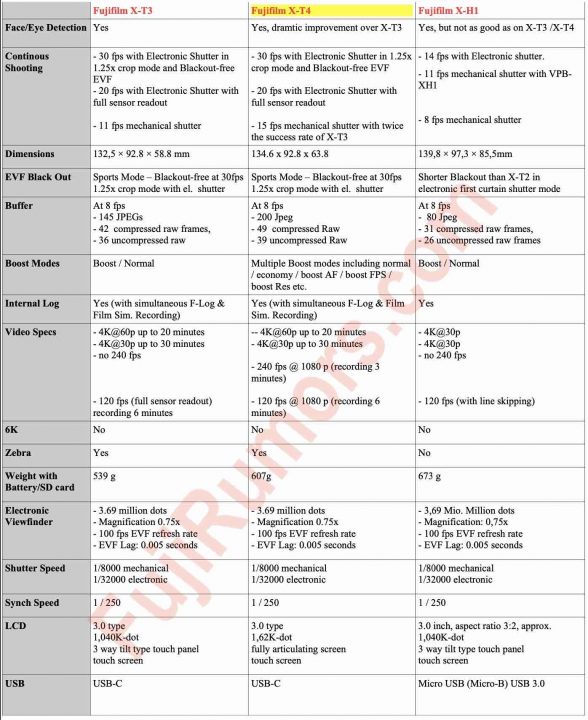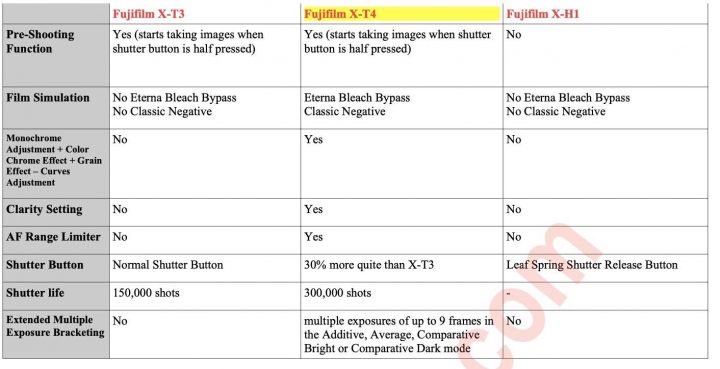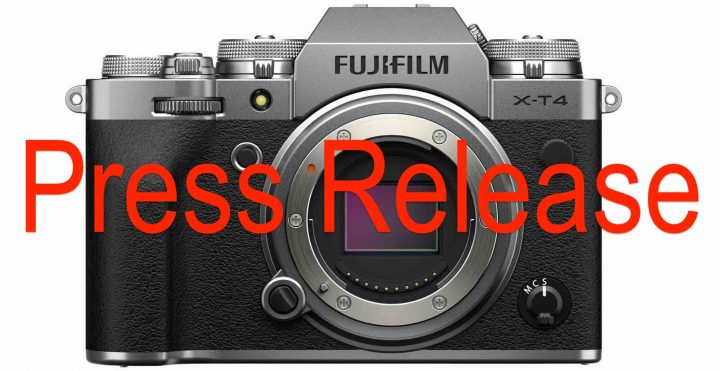
Down below you can find the press release for the Fujifilm X-T4 leaked by nokishita. Some key points:
- 30% more quiet shutter than X-T3
- huge AF improvement
- tracking success rate has been doubled compared to the X-T3
- face/eye detection dramatically improved
- 6.5 stops IBIS with 18 X mount lenses out of 29
- IBIS has magnetic force rather than springs
- X-T4 IBIS is 30% smaller and 20% lighter than X-H1’s IBIS
- shutter durability with 300,000 actuations (double the X-T3)
- 240 fps at Full HD
- Video in the same format can be recorded on to two SD cards at the same time as backup
- new battery with 500 shots in normal mode and 600 in economy mode (X-T3 has 390 shots in normal mode)
- The “Fix movie crop magnification” function fixes the video crop rate to prevent changes in the angle of view when switching to a different video mode.
- An “MIC jack setting” on the camera can be switched input level between MIC level and LINE level. The camera supports external microphones as well as LINE level input from external audio equipment.
THE TIME: Fujifilm X-T4 announcement at 9PM San Francisco time of February 25 – LIVE BLOGGING on FUJIRUMORS
Fujifilm X-T4: BHphoto / AmazonUS / Adorama / FocusCamera
→ Top X-T Community: Fujifilm X-T facebook group
→ Top X-T Page: Fujifilm X-T Page
Press Text
The X-T4 uses the back-illuminated 26.1MP X-Trans CMOS 4 sensor and a high-speed image processing engine, the X-Processor 4. Combined with FUJIFILM’s colour reproduction technology, the X-T4 delivers a wide variety of options so you can recreate a scene exactly as you remember it.
IBIS provides 5-axis 6.5 stop image stabilisation when used with 18 out of 29 XF / XC lenses. It offers many new components, including new materials to the base part, a refined layout of the shutter’s shock-absorbing structure and newly developed gyro sensors that boast approx. 8 times the detection accuracy of the IBIS unit in the X-H1. This particular mechanism assists night photography and sports photography, and also helps video recording in situations prone to camera shake. The new IBIS unit uses magnetic force rather than springs, which boosts functionality while making it approx. 30% smaller and 20% lighter than X-H1’s image stabilisation mechanism.
Thanks to newly developed high-torque coreless DC motor, the ultra-fast focal plane shutter has the capability to shoot up to world’s fastest 15fps in burst mode, and has advanced response performance with a shutter release lag of just 0.035 seconds. The shutter unit also boasts double the durability with 300,000 actuations and offers shutter noise approx. 30% quieter compared to the X-T3.
The 1.62 mil dots vari-angle monitor allows for more creative and versatile shooting styles.
The LCD/EVF can be boosted in three different ways, Low Light Priority – allowing users to see the subject clearly in low light, Resolution Priority – displaying even the fine details of your subject and Frame Rate Priority which minimises blur in the viewfinder when shooting a moving subject. The eyecup now has a locking mechanism to prevent tearing or dislodgement.
The Boost / Normal modes are now joined by the Economy mode, which saves the power to increase the battery life.
The X-T4 features “ETERNA Bleach Bypass” a new Film Simulation mode, that uses FUJIFILM’s unique technology to provide versatile colour tones. The new mode simulates “bleach bypass,” which is a traditional processing technique for silver halide films; creating images with low saturation and high contrast for a special atmosphere.
Highlight and shadow tones from -2 to +4 can now be adjusted by 1/2 stops, instead of 1 stop, allowing for finer tonality, and White Balance now has “White Priority” and “Ambience Priority” options in addition to “AUTO.” The “White Priority” mode reproduces a stronger white, while the “Ambience Priority” produces a warmer tone.
When “RAW” is selected, users now choose the non-reversible “Compressed” option in addition to the reversible “Lossless Compressed.”
A new algorithm and phase detection AF’s processing capability has led to autofocus performance as fast as 0.02 seconds. This ensures that users can capture and track a subject moving at high speed, especially when combined with the continuous shooting performance of 15fps in post view and 8fps in live view.
Tracking AF performance has also undergone serious enhancement. The tracking success rate has been doubled compared to the X-T3. The Face / Eye AF performance has also been dramatically improved. This enhanced tracking ability has made focusing and taking portraits even easier than ever before.
The X-T4 is capable of recording Full HD high-speed video at 240P, producing up to 10x slow-motion effect. IBIS is effective when combined with the electronic image stabilization function (DIS) for use in the video mode, and brings even more image stabilisation, which is essential for users shooting video whilst walking.
The “IS (Image Stabilisation) Boost” mode mitigates gentle camera shakes, enabling stabilised fixed-point video recording without a tripod.
The stills and video modes now have separate menus and the video-only Quick Menu (Q Menu) button has enhanced the camera’s simplicity while recording video. A ”Movie optimised control” function has been introduced; users can adjust exposure with the command dial as well as the touchscreen panel. With this function, user can switch the STILL / MOVIE mode dial on the top panel to swiftly shift into video recording with stored video settings.
Video in the same format can be recorded on to two SD cards at the same time as backup. And the F-Log View Assist function has been added to correct low-saturation / low-contrast video while recording F-Log. Video is converted equivalent to BT.709 for display to make it easier to attain correct exposure in video recording.
The “Fix movie crop magnification” function fixes the video crop rate to prevent changes in the angle of view when switching to a different video mode. An “MIC jack setting” on the camera can be switched input level between MIC level and LINE level. The camera supports external microphones as well as LINE level input from external audio equipment.
– via nokishita


